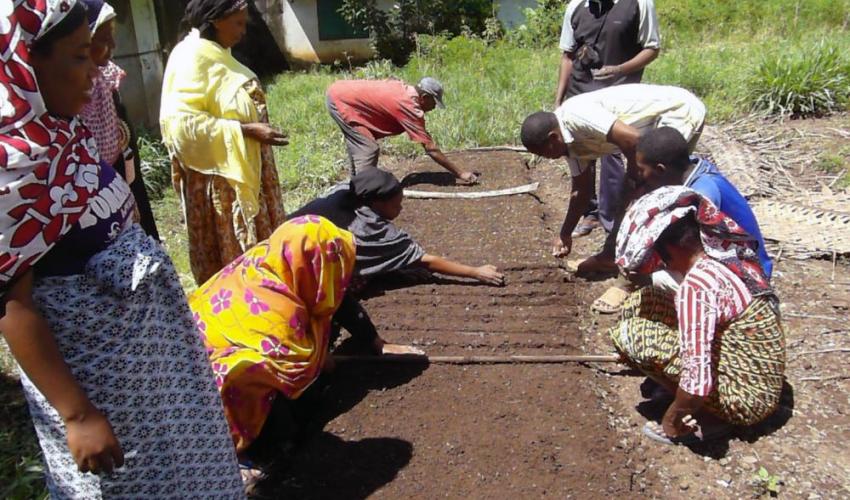Comoros NGO Dahari is breaking the poverty-forest degradation cycle in the Comoros. Balancing long-term sustainability goals with the immediate development needs of local populations has been essential.
Welcome to Anjouan, a Comoros island in the Western Indian Ocean and a modern-day example of environmental collapse.
Anjouan has lost 80% of its natural forest over the past twenty years as a result of unsustainable agricultural expansion and practices that include cutting old-growth trees for construction material, ylang ylang distillation and charcoal production.
The local population is feeling the consequences: around 40 of 50 previously permanent rivers now flow only intermittently, and water for drinking and agriculture is in short supply. Soil fertility and thus agricultural yields are in sharp decline, and erosion of steep volcanic slopes is silting the reefs in the waters around the island.
Wildlife is also being negatively impacted, the flagship Livingstone fruit bat is in the process of being upgraded to Critically Endangered in the IUCN’s Red list, and over 20 other terrestrial species are listed as vulnerable or worse.
If Anjouan Island is a microcosm of global-scale environmental problems, can it provide lessons on how to protect remaining forests worldwide?
We think so.
Over the last eight years the Comorian NGO Dahari has been developing an integrated landscape management approach to tackling deforestation in the archipelago. Most of our work has taken place in a pilot zone in the southern part of Anjouan.
We decided to concentrate our efforts on breaking the poverty-forest degradation cycle. Our logic being: forest protection measures alone would not address any of the underlying drivers of deforestation including poverty, and would likely have negative impacts on the livelihoods of local communities. Conservation actions have to benefit local people if they are going to be supported and thus sustainable. We therefore directed the majority of our resources to supporting agricultural and agroforestry production lower down the volcanic slopes in order to improve the livelihoods of over 4000 farmers and reduce pressure on upland areas before attempting to put any forest protection measures in place.
This approach helped us in two critical areas: developing trust with local communities by prioritising their needs and gaining a deep understanding of the complicated social dynamics in the villages. These will both be crucial to future collective management efforts in Anjouan, where a breakdown of traditional community power structures can make these types of initiatives diffucult.
We’ve simultaneously undertaken various social studies and wide-ranging ecological surveys to develop an evidence base to inform our conservation actions. This has enabled us to prioritize our interventions. For example, we were able to establish that the Critically Endangered Anjouan scops owl was less threatened than feared, and inversely, that threats to the Endangered Livingstone’s fruit bat were more severe than we had previously thought. We reoriented our efforts accordingly.
Only in the last two years have we moved forwards with campaigns to protect key forest areas, reforest water catchment areas critical for freshwater supplies, and conserve the biodiversity hotspots surrounding the roost sites of the Livingstone’s fruit bat. These forest management and targeted biodiversity protection initiatives are ground-breaking in the Comoros. We’re trying to mobilize the entire population around these initiatives. Many of the country’s most famous musicians recently come together to make a charity album to Sing4ComorosForests.
It has taken us the better part of a decade to get to actual forest protection, but we believe that the long-term investment, the focus on the immediate development needs of local populations, and the effort to develop a truly integrated and participatory approach was the only way to lay the ground for long-term success. Bit by bit, we hope we are creating a sustainable future for the forests, local communities and biodiversity of the Comoros.
- Hugh Doulton, Technical Director, Dahari Comores











